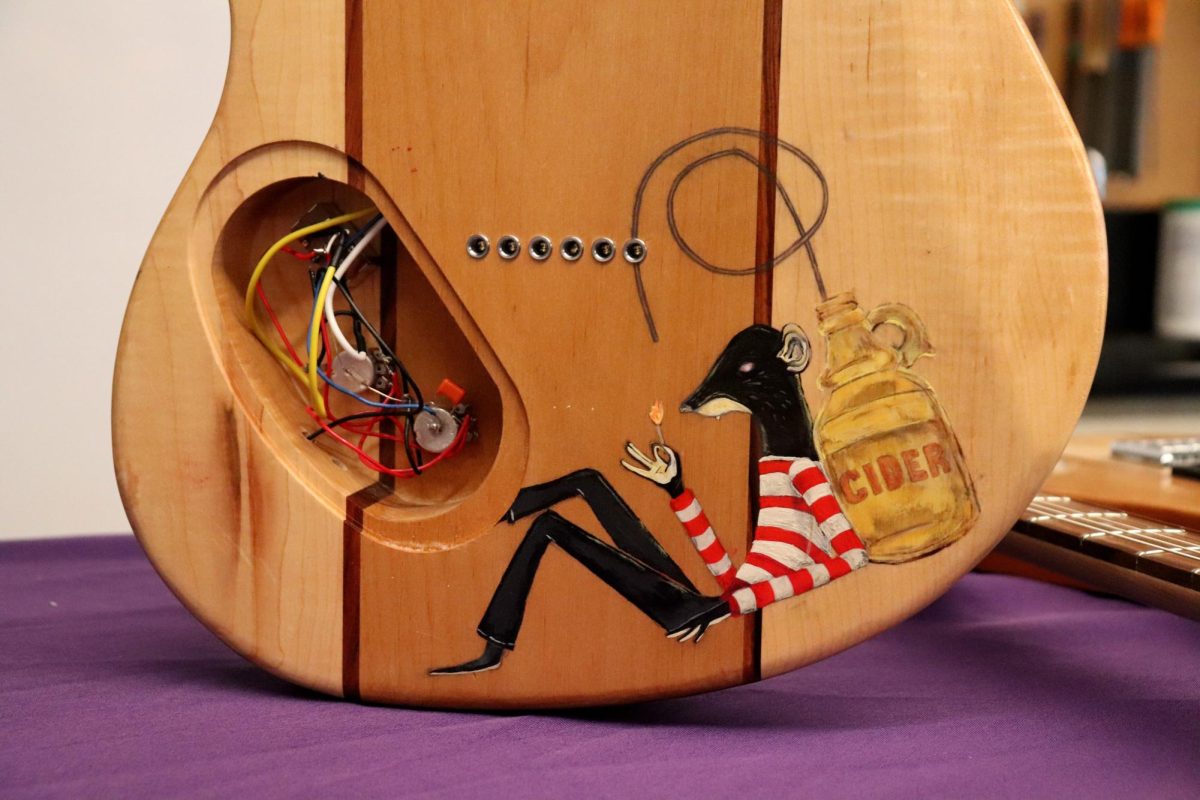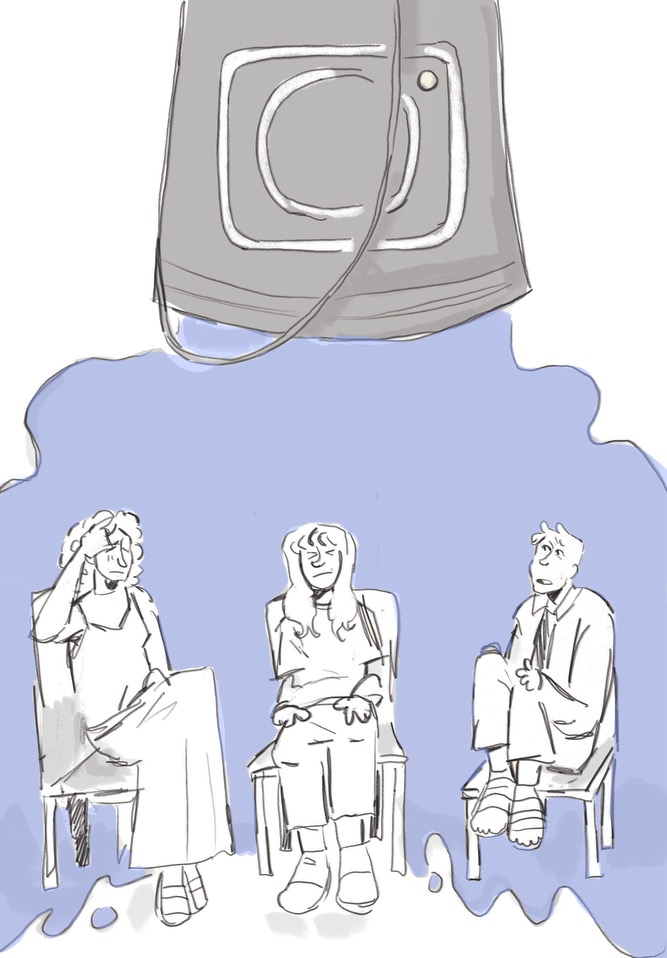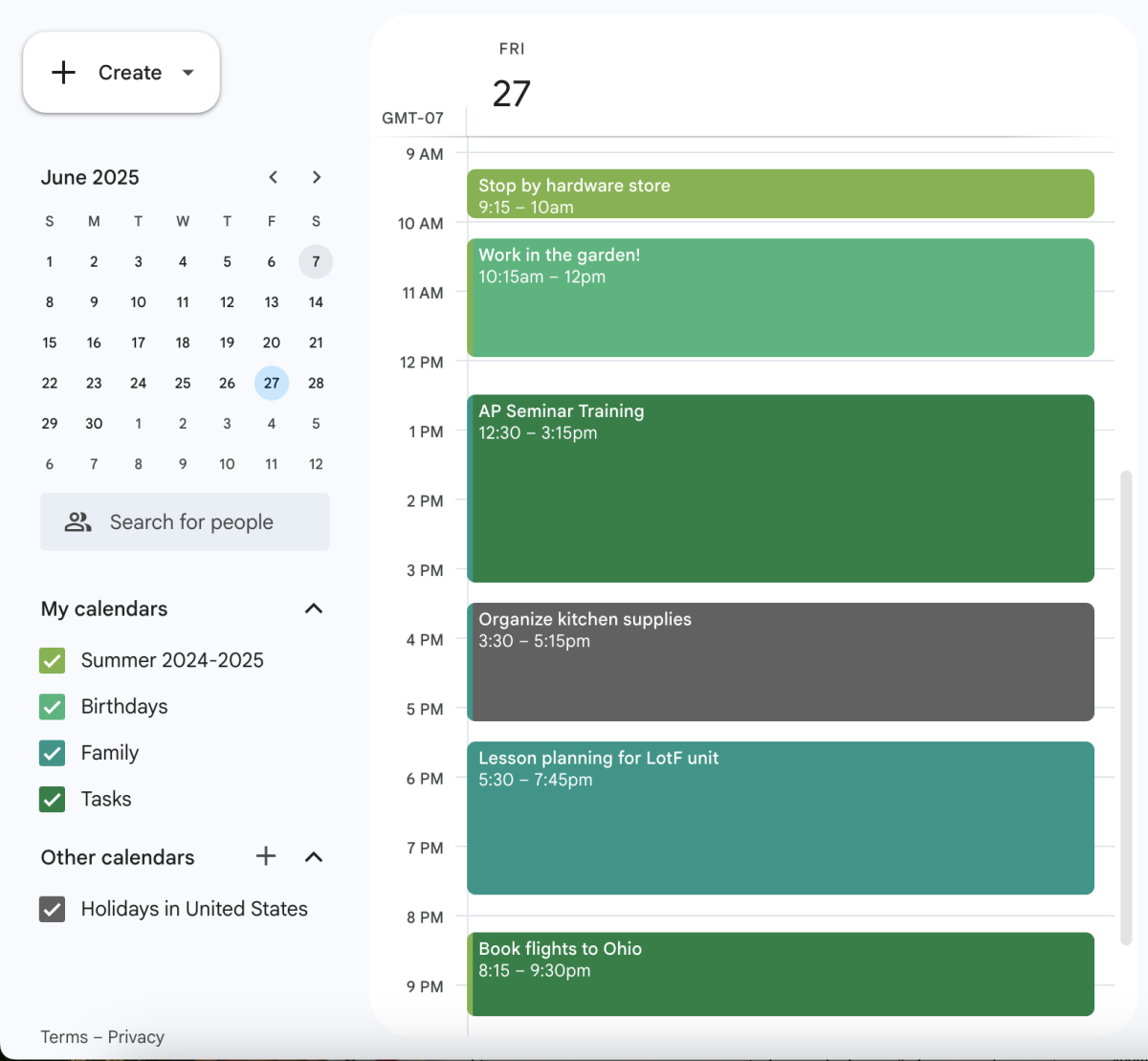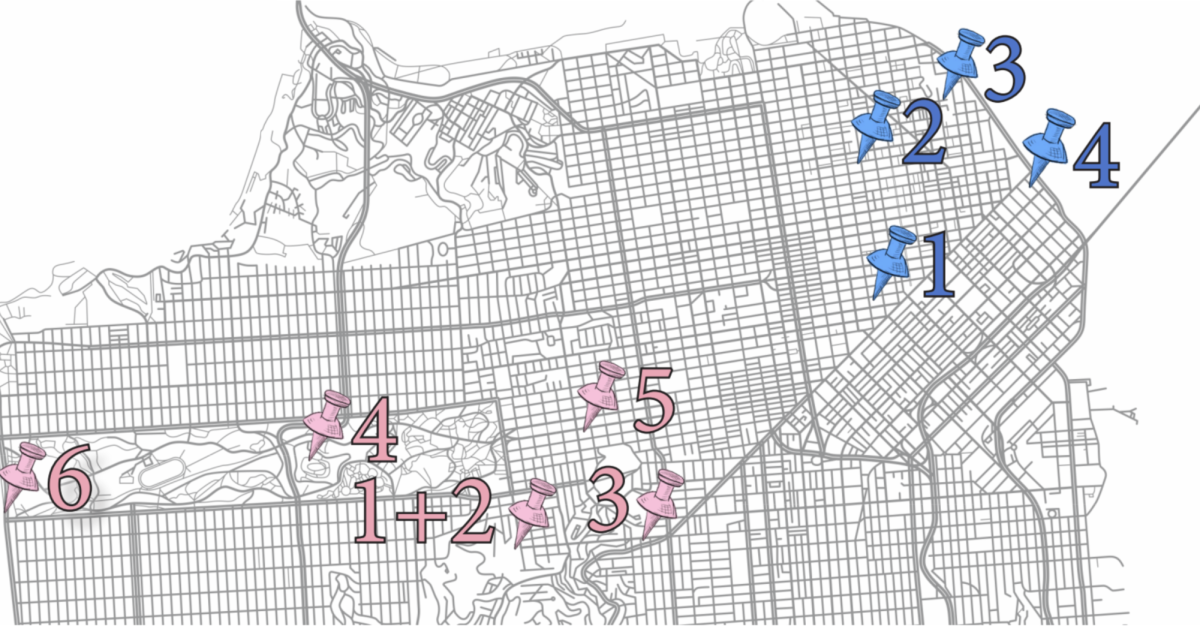Gluten and eggs were the first to go. Chocolate and Diet Coke were next. And for ten days, all carbohydrates, sugars, dairy and processed foods went out the window.
This is the saga of psychology and US History teacher Alli Cota’s recent changes in her diet. She isn’t the only one rethinking what goes on her plate: others at PHS have amassed a cornucopia of reasons for doing so as well, from winning bets to winning gold medals at national competitions.
Junior Tess Olcott underwent a detox like Cota did, but Olcott’s lasted 26 days and excluded sugar, salt, gluten, meat and dairy. Olcott’s GreenSmoothieGirl Detox is a meal plan with four phases and different restrictions each day.
“The third phase is the worst one: the first two days you only get to eat watermelon, and the next two days it’s mostly smoothies,” Olcott said. “It’s weird and it’s cliché, but I actually feel cleaner because I’m used to eating crap.”
 After only cutting gluten, economics teacher Gabrielle Kashani felt better too: the mental lull she felt periodically, which she also observes in her students, had vanished.
After only cutting gluten, economics teacher Gabrielle Kashani felt better too: the mental lull she felt periodically, which she also observes in her students, had vanished.
“I used to have that afternoon fog every day and the only way to get out of that was sugar,” Kashani said. “Now, my mind is clear almost all the time.”
Olcott said that she did not complete the 26-day sequence earlier partly because soccer season had not ended yet. Her new motivation comes from her father, who bet her money that she could not complete it after a previous unsuccessful attempt.
Cota’s motivation also came from her family, but in her case, everyone decided to try a detox together.
“It’s supposed to reset your insulin response system and thereby increase energy and general feelings of health,” Cota said. “Additionally, the diet supposedly can help improve all sorts of issues from lowering inflammation, to lessening symptoms of hay fever, to alleviating joint pain, to elevating mood.”
For junior Jenny Hosler, changing her diet was part of her journey to winning nationals for crew: she needed to lose weight to qualify for the lightweight category. Hosler first gave up sugars and desserts, then replaced carbohydrates with meat and vegetables.
“I definitely saw a difference in my body and it felt nice to be lighter and a little slimmer,” Hosler said.
She found success by hydrating often and switching to ice water before a meal to boost metabolism, delaying eating after a workout for 30 minutes for muscle gain, eating rice instead of pasta for less carbohydrates, and choosing chicken and fish over other meats.
DINING DISCIPLINE
At times, Olcott, Hosler and Cota all struggled with watching others eat delicious foods.
“At first they would taunt me but then they would realize I was in pain and they wouldn’t anymore,” Olcott said.
Although the social aspect of food can challenge those within a food regimen, it can also help support them.
“Everyone bonds together because half the boat’s probably dieting,” Hosler said. “You share your experiences with what works for you.”
Individual ways to reduce cravings do exist as well, even when an eating plan seems like a bigger bite than can be chewed.
Losing the last five pounds was hard for Hosler, so sometimes her strategy of drinking water and chewing gum instead of eating did not satiate her.
“Mostly I’d just try and turn away, or tell myself I was going for a goal,” Hosler said.
Although Hosler has not been dieting for almost a year now, her heightened awareness of which foods she should and should not eat when choosing her meals has stayed with her.
“Even though it was kind of annoying to diet, it was nice and I felt better about myself afterward and during,” Hosler said. “I think it was overall a positive thing and people should think about doing it.”
While changing her diet has also rewarded Cota, specifically with more energy and less stomach inflammation, she said she recognizes and worries dieting can become unhealthy as well.
Extreme diet modifications such as laxatives, herbal remedies and over-the-counter prescriptions have existed for years, clinical dietitian Sabine Haake said.
Cleanses, especially those of the juice variety, have increased their presence in popular culture from Modern Family episodes to the top of the New York Times best-seller list. Ready-made juices with step-by-step plans can be bought in shopping malls and online.
Haake said that in the clinical world, however, cleanses do not exist. Juice vendors will even overstate the value of their ingredients’ properties.
“For example, turmeric, peppers, lemon, all of them are perfectly healthy and they have certain kinds of health benefits,” Haake said. “But to use them to clean out your gut from the inside out because it is so ‘toxic’ or ‘dirty’ — there is no research behind it that supports that.”
Organs can clean themselves and most internal bacteria live in symbiosis with the body. Even if one were to rid their organs of bacteria, they would simply regrow in 24 hours, Haake said.
Besides, restricting food will decrease metabolism and lessen calories burned. Or, overbearing hunger will cause vulnerability to overeating, she said.
“I know it’s really tempting to follow the newest trends but there have been so many trends in the past I cannot even count them off, ” Haake said. “They all turn out the same way being a disappointment in terms of what you’re going to be able to maintain over the long run.”
Registered dietitian and nutrition therapist Stephanie Brooks, MS, also holds a skeptical attitude towards “wacky” or extreme diet changes, even if they are short-term. Brooks advises that if people decide to embark on a dietary adventure, they should have a reason for doing so and find out more about the science behind it first.
“When you look at a lot of the detox stuff, or almost a fast where you don’t eat food, there’s a level of under-nutrition for a time that just doesn’t make sense,” Brooks said.
However, researching food in excess can actually also lead to an adverse effect known as orthorexia. People suffering from orthorexia become far too rigid about their foods under the guidelines of being healthy and will go to lengths to obtain specific foods from specific places, Brooks said.
“It becomes almost a compulsion, if you will,” Brooks said. “People are missing out opportunities to live their life.”
Notwithstanding special dietary needs, nutrition is simple to Brooks: eat when hungry and stop when comfortable.
“Your body needs nutrition, so why mess with that?” Brooks said.
NEW PERSPECTIVES
Through the evolution of her eating habits, Cota’s experiences have shown her that not all calories are equal and that the large presence of sugary carbohydrates in the American lifestyle creates a vicious cycle of craving, indulging and crashing.
“Eat real, whole foods that your grandmother would recognize and that you can pronounce,” Cota said.
Committing to a specific amount of time and preparing equipment or ingredients ahead of time will help for those looking to change their eating habits, Cota said.
“By all means have some of the fun foods, but don’t live on the fun foods,” Haake said. “Warm up to the idea of moderation.”
No matter if someone eats vegetarian, gluten-free, paleo, or simply whatever they feel like, one commonality unites the eating experiences of all teenagers.
“Your body is going to look different from month to month: try to breathe and be patient. Understand that everyone comes in different sizes and shapes,” Brooks said. “If you’re feeling pressures to modify how you eat because of somebody or something, talk with some adults in your life about your worries.”

























